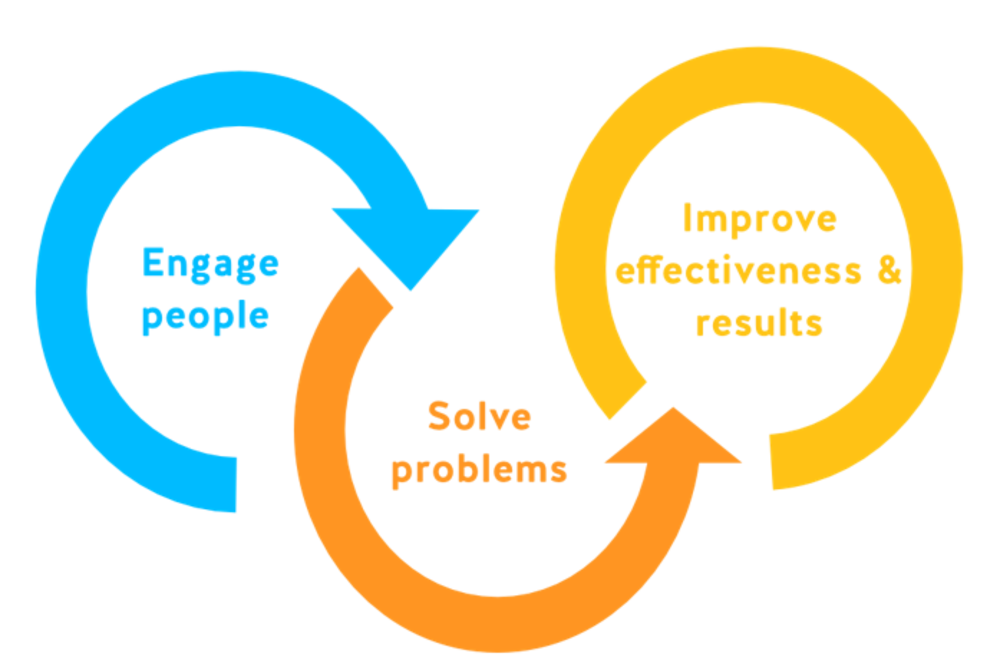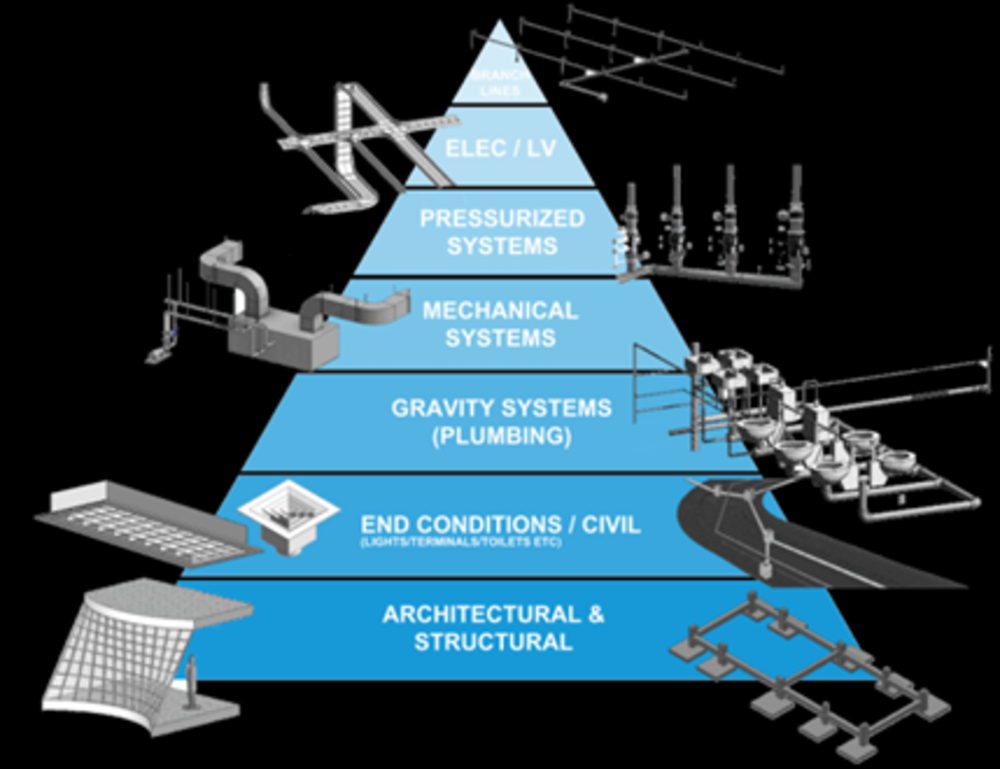This article is part of a blog series, which explores the use of Building Information Modeling (BIM) in the construction industry.
Before going to the challenges and benefits of using BIM in design we have to clarify what BIM means.
What are the tools, the processes, the method, what context BIM should be used in, and what are the limitations:

Small companies often cite the lack of BIM from Clients of small projects as the costs for the projects would be disproportionate. This is a myth and a self-limiting barrier for those unfamiliar with the process. BIM can save you money on all projects, small or large as it minimizes setup, training, and project management costs.
BIM is a methodology, a culture that helps you to implement a bespoke solution to respond to the specific needs of your clients.
Next time you want to start a project and your client is not ready to embrace BIM why don’t you aim at providing recommended actions or choices and giving them the option of following these steps.
Gather information on the current situation of the asset to be built:
Does that make sense to you? Well, this is what BIM is all about:
If you use BIM products in a transparent & seamless way without your clients knowing, you will delight them as you:
Before starting a project ask yourself the following questions to make sure you have the right people on board:
Technology is varied and is changing rapidly, so before starting a project make sure that you have the right software in place.
Software companies claim to have the latest and greatest product, but how do you know that they are the best tools for your project?
Take the time to understand what you are trying to achieve with software and how you can integrate and systemize it to help you yield positive results. Consider the following questions:
Data Management is a complex subject and it is difficult to keep up with technological evolution. It could be daunting for all large and small firms to define it alone. An external partner can help you to discover:
Design is a 'team sport' with a multitude of different disciplines coming together (at various stages) to work on the delivery of a project. Ever closer collaboration is key to realizing the benefits of a BIM approach and therefore how the information will be delivered across the project lifecycle needs to be carefully considered from the outset.
The following tool kit will allow you to exchange information on a BIM project. For information to be successfully exchanged it is necessary for all contributors to understand what they need to provide (and what others will be providing too) and how this information will be both presented and used.
Automated templates allow you at the beginning of a project to decide with the teams how the information is exchanged.
For each project, defining the required information, in an agreed format in Open BIM, to be delivered to the client at key points during the project lifecycle is crucial. At these information delivery points, data can be analyzed and decisions can be considered based on the information available to multiple stakeholders. This information ensures that projects are properly validated and controlled as they develop.
Building information as a project progresses is essential to providing the right level of detail, at the right time, to the right people. Set out how the information is delivered across the project lifecycle needs from the outset of the project.
Allow the supply chain to exchange their own information as frequently as they wish even if not exchanged with the owner.

When an Owner requests “BIM” without understanding what they’re asking for; solely because a technology vendor has promoted never-ending BIM benefits.
When not enough BIM is authored and the project has not been adequately defined, tasks cannot be completed thoroughly (for example proactive coordination, accurate quantity take-off, or the perfect 4D schedule).
When teams produce more BIM than can be used by the customer/end users – doing anything that’s not needed is wasteful (and evil 😉).
When project teams are unclear about what BIM they should be modeling and sometimes incorrectly model each other’s scope (who’s supposed to model the lights – Architect? Interior Designer? Electrical Engineer? Contractor?).
When all work starts at the same time, then teams unknowingly model clashes rather than using a prioritized clash avoidance workflow.
When a team intentionally agrees on a precise but incorrect BIM scope knowing that they will issue Change Orders later (this is doing the wrong thing, but really really well!). This is an evil BIM challenge.
When teams create and share poor quality models that will ultimately increase rework and drive costs up! This is usually a training challenge.
When teams use a spreadsheet full of numbers to set a contract is too confusing and poorly defines the levels of BIM risk. 😉
When a design team feels under pressure to say “ok” – accepting an owner’s request for LOD 500 plus COBie deliverables for the entire project instead of the right people accepting what’s important. As described in this blog.
Pretending to have clear 3D and BIM objectives on a project but only contracting to 2D deliverables.
Instead of Evil BIM, we prefer Smart Lean BIM™ to deliver the right benefits

When you start a project with BIM you ensure that the tools you are using:
These benefits are available to all types of architects and engineers on almost all types of projects. Driving Vision research demonstrates that in general, practices have embraced BIM as a tool, but are not fully aware of the BIM requirements in the delivery process, the selection of service providers, and the approach to projects necessary to fully realize BIM’s benefits.
BIM has evolved dramatically over the past few years and offers many advantages in the design phase of a project.
What is still not as widely utilized with regards to BIM is its benefits with regard to project management and the streamlined way in which information can be shared between the design and construction teams. The major benefits are:

BIM is a way of working together it gives you the ability to scope, plan, design, track, view, construct, and maintain your projects in an environmentally friendly way.
All stakeholders in a project can access a huge volume of data simultaneously, creating a complete digital description of a building project in a single, always updated file. The model is built up using a library of standard objects.
The use of automation in BIM gives you time to consider the sustainability of the project. It enables designers and planners to create more cost and schedule scenarios in a fraction of the time, allowing them to think more creatively about new sustainability solutions.
BIM moves documentation and designs out of a ring binder into a digital space, making collaboration, visualization, and decision making transparent and timely, through automated and integrated processes.
To get the most out of BIM you have to invest in employee training. At Driving Vision, we understand that getting the most out of your BIM tools is not easy but with the right training, you can enjoy a 24% higher profit margin versus companies who don’t invest in training.
The benefits of BIM’s integrated project management capabilities & design optimization are streamlining how information can be shared between design & construction teams.
How do you know what is right for your practice?
Technology is very varied and expensive. Why don't you take the Driving Vision Technology appraisal diagnostic it will help you to insert new technology in your workflows and how to move your organization to cloud computing so you can open up new possibilities for your daily planning tasks and make sure your data never leaves the optimally secured data center. The technology appraisal report will help you to explore what investment is required to improve your projects’ productivity and collaboration as well as the ROI you can expect on your investment.
Implementing BIM can be daunting, but Driving Vision is here to help you at the pace you are comfortable with. Get started by getting in touch now
You minimise the level of investment required to implement BIM as we share the Research and Development costs with other client
You increase your revenue by staying ahead of the competition as BIM best practices allows you to win bigger and more rewarding projects.
You reduce your costs, more than our fees cost you, by decreasing potential litigations, rework, and errors and omissions
